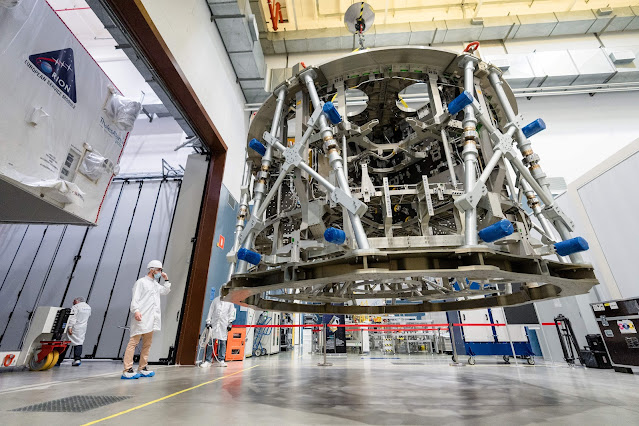Expedition 67 International Space Station Crew Answers Overseas Student Questions
Aboard the International Space Station (ISS), NASA Expedition 67 Flight Engineers Kjell Lindgren and Jessica Watkins of NASA answered pre-recorded questions about life and work on the orbital laboratory during an in-flight event May 31, 2022, with students attending Lakenheath High School in the United Kingdom. Lakenheath is operated by the U.S. Department of Defense Education Activity (DoDEA). Royal Air Force base Lakenheath is owned by the UK Ministry of Defence and leased to the United States Air Force and its 48th Fighter Wing of F-15 jets. Astronauts Lindgren and Watkins are in the midst of a science expedition mission living and working aboard the microgravity laboratory to advance scientific knowledge and demonstrate new technologies for future human and robotic exploration missions as part of NASA’s Moon and Mars exploration approach, including lunar missions through NASA’s Artemis program.
Jessica Watkins' Biography (NASA)
https://www.nasa.gov/astronauts/biographies/jessica-watkins/biography
Kjell Lindgren Biography (NASA)
https://www.nasa.gov/astronauts/biographies/kjell-n-lindgren/biography
Learn more about the important research being operated on ISS:
https://www.nasa.gov/iss-science
For more information about STEM on ISS: https://www.nasa.gov/stemonstation
Expedition 67 Crew
Commander Oleg Artemyev (Russia)
Roscosmos Flight Engineers: Denis Matveev and Sergey Korsakov (Russia)
NASA Flight Engineers: Kjell Lindgren, Bob Hines, Jessica Watkins (USA)
European Space Agency (ESA) Flight Engineer: Samantha Cristoforetti (Italy)
Credit: NASA Video
Duration: 21 minutes
Release Date: May 31, 2022
#NASA #ESA #ISS #Earth #Artemis #Moon #Mars #JourneyToMars #Science #Astronaut #Astronauts #FlightEngineers #JessicaWatkins #KjellLindgren #HumanSpaceflight #UnitedStates #LakenheathHighSchool #Military #AirForce #USAF #EastAnglia #UnitedKingdom #DoDEA #STEM #Education #HD #Video




.jpg)
.jpg)
.jpg)
.jpg)
V2.jpg)
.jpg)

.jpg)
.jpg)




V1.jpg)
V2.png)
V3.jpg)
V4.png)
V5.jpg)
V6.jpg)
V7.jpg)

















